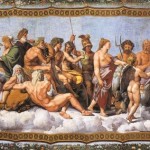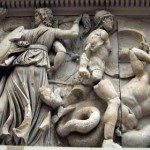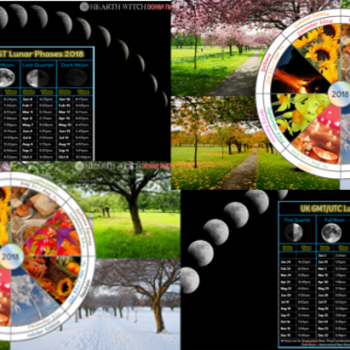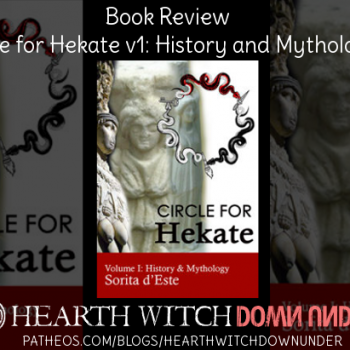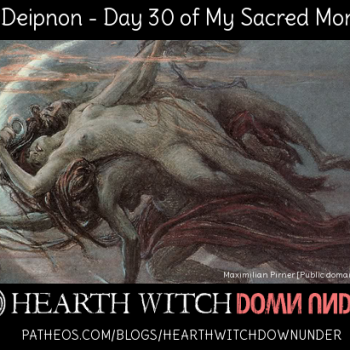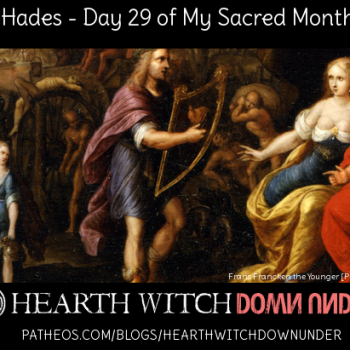This post is part of a blog challenge series, 30 Days of Devotion to Hekate. We’re up to day 17 and looking at how Hekate relates to other Gods and other pantheons.
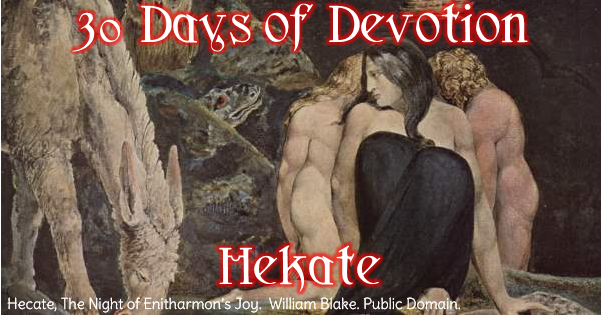
Once again I am not entirely sure what the question actually means, as it can be interpreted multiple ways. Does it simply mean to ask how She gets along with other deities, how She interacts with Them? Like friend or enemy sort of thing? Or does it mean in a more syncretic way, how does She relate to other Gods and pantheons, as in how did ancient people compare Her to other deities, merge Her with Them and the like?
I am going to go with other pantheons and syncretism/conflation for this one. As we have already looked at Her relationship with other Hellenic deities. I am far more versed in the Hellenic Gods than those of other cultures and pantheons, so excuse me if I do get some details wrong in this. Correct my mistakes for sure, but forgive me for them.
Isis
Isis or Aset from Kemetic religion (Egyptian). A Goddess of the Egyptian Underworld and the dead, a protector of Children and Patroness of magic.
Aurelius, The Golden Ass – “[…]Some call me Juno, others Bellona of the Battles, and still others Hecate. Principally the Ethiopians which dwell in the Orient, and the Egyptians which are excellent in all kind of ancient doctrine, and by their proper ceremonies accustomed to worship me, do call me Queen Isis.[…]”
Isis was welcomed into Greek and Roman religions, and the Graeco-Roman mix religion as well. She was heavily syncretised with Hekate, then and now.
I am an omnitheist and consider all of the gods to be individual beings, so Isis and Hekate are separate beings. Still, looking at ancient syncretism can tell one much about a deity, by looking at who They were syncretised with. Isis is also a Goddess who is considered to be the friends of slaves and those who are hard done by. This, to me, explains much in why Hekate is also seen the same way despite there not being much evidence for it through lore.
The Morrigan
I don’t know about this in history but it is certainly a modern conflation. The Morrigan is a triple Goddess in Celtic polytheism, the Crow Goddess, the Queen of the Witches, also a War Goddess.
The Morrigan, as a triple Goddess is made up of three Goddesses, Macha, Badb and Anu. The parallels between each of these three and Hekate is interesting. Macha – horses and future telling. Badb – Maiden and Crone of the Underworld. Anu – Fertility (Hekate is an earth Goddess remember. As the one who helps Persephone ascend each year, She is partially responsible for the return of the fertile seasons).
As we know in modern Paganism Hekate is considered the Crone of the Triple Goddess, and via this She is considered a dark Goddess. The Morrigan is also the Crone in this Triple Goddess, also a dark Goddess. And I think this is largely where the conflation arises – They are both Crones therefore They are the same Goddess.
Through this conflation we can see the crow and raven become sacred animals of Hekate.
Ereshkigal
Ereshkigal is a Mesopotamian Goddess, Queen of the Underworld. She was syncretised with Hekate in the later Hellenistic period (after Alexander the Great). One myth makes Her a sky Goddess before She was stolen and taken to the Underworld and forced to become the Queen there.
I can’t find much to connect the two really, being a sky Goddess and then becoming a death Goddess is about all there is that I can see. But it is a historical conflation as well as a modern one. I suspect there is much we don’t know about Erishkigal and those things we don’t know are what possibly lead to the conflation between the two Goddesses. I can’t imagine the Underworld being the only connection – and as Queen surely She is better connected to Persephone?
Once again the modern conflation is mostly because of the death and dark Goddess aspect – Ereshkigal is another Crone Goddess.
Others
Some of the others I have seen conflated with Hekate, usually based on the Underworld aspect, the Witchcraft aspect or on the Dark Goddess idea are – Cerridwen, Hela, The Cailleach, Lilith and Kali. Lucifer is also connected to Her in some traditions, because they are both light bearers/bringers.
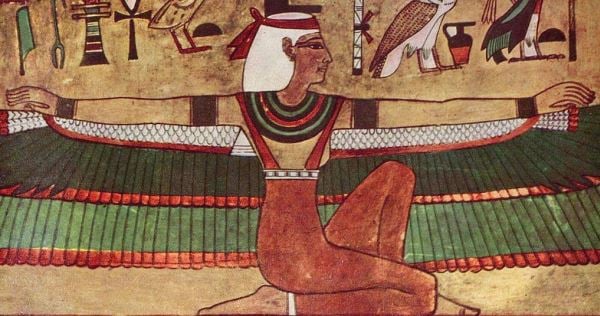
30 Days of Deity Devotion
1 – A basic introduction of the deity
2 – How did you become first aware of this deity?
3 – Symbols and icons of this deity
4 – A favourite myth or myths of this deity
5 – Members of the family – genealogical connections
6 – Other related deities and entities associated with this deity
7 – Names and epithets
8 – Variations on this deity (aspects, regional forms, etc.)
9 – Common mistakes and worst misconceptions about this deity
10 – Offerings – historical and UPG
11 – Festivals, days, and times sacred to this deity
12 – Places associated with this deity and their worship
13 – What modern cultural issues are closest to this deity’s heart?
14 – Has worship of this deity changed in modern times?
15 – Any mundane practices that are associated with this deity?
16 – How do you think this deity represents the values of their pantheon and cultural origins?
17 – How does this deity relate to other gods and other pantheons?
18 – What quality or qualities of this god do you most admire? And find the most troubling?
19 – Art and music that reminds you of this deity
20 – A quote, a poem, or piece of writing that you think this deity resonates strongly with
21 – Your own composition – a piece of writing about or for this deity
22 – A time when this deity has helped you, and refused to help
23 – How has your relationship with this deity changed over time?
24 – Something you wish you knew about this deity but don’t currently
25 – Any interesting or unusual UPG to share?
26 – Any suggestions for others just starting to learn about this deity?

